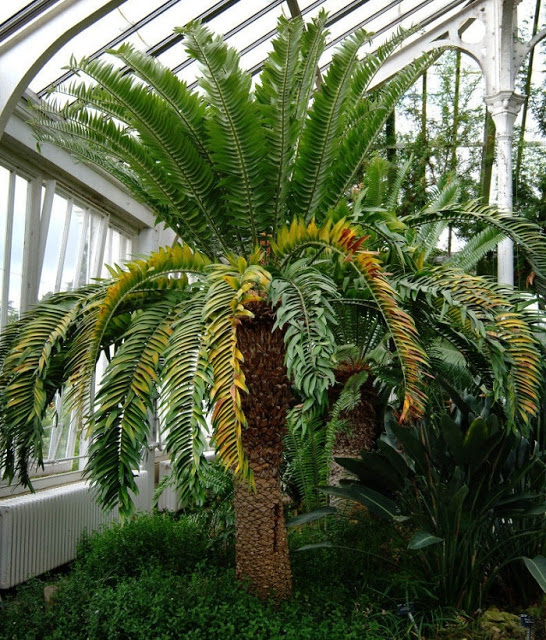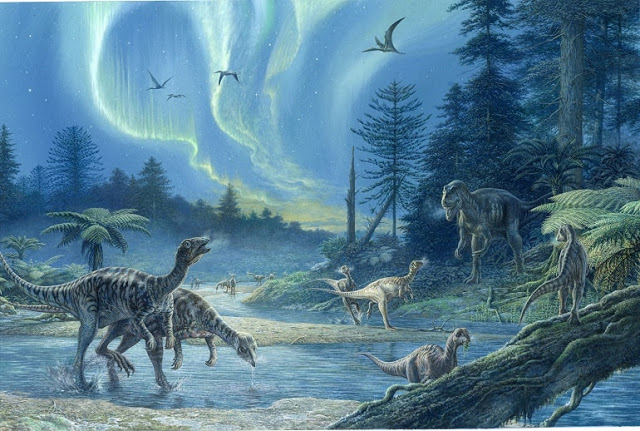by Staff writer
One day in 1895, while walking through the Ngoya Forest in Zululand, southern Africa, a botanist with the oh so suitable name of John Medley Wood caught sight of a tree.
It sat on a steep slope at the edge of the woods and looked different from the other trees, with its thick multiple trunks and what seemed like a splay of palm fronds on top.
From a distance it looked almost like a palm tree, and Dr. Wood — who made his living collecting rare plants (he was director at a botanical garden in Durban) had some of the stems pulled up, removed, and sent one of them to London.
That little tree stem was then put in a box and left in the Palm House at the Royal Botanical Gardens at Kew.
It sat there, alone, for the next 98 years.
Named E. woodii, in Dr. Wood’s honor, it is a cycad.
Cycads are a very old order of tree and it turns out this one, which is still there in London, may be the very last tree of its kind on our planet, the last one to grow up in the wild.
Two hundred million years ago, cycads were everywhere.
Cycad forests reached from Greenland to Antarctica (though the continents were not where they are now).
The now extinct flying reptiles, pterodactyls, flew through them.
Big dinosaurs munched on them.
During the Jurassic period, small, stumpy palm-looking trees — the ones you can see in John Sibbick’s painting above — made up about 20% of the world’s plants.
Somehow these E. woodii survived the catastrophe that wiped out the dinosaurs, got through five different ice ages, learned to live with bigger, newer trees, the conifers, leaf bearers, then a profusion of fruiting and flowering plants, got pushed into smaller, then even smaller spaces until there were merely tens of thousands, then thousands, then hundreds and then, perhaps, just this one Dr. Wood discovered.
 |
|
The extremely rare Encephalartos woodii at the KEW Royal Botanical Gardens.
Andrew McRobb/RBG Kew
|
The problem is, these trees cannot fertilize themselves. Some plants contain male and female parts on the same individual. But not the E. woodii.
It is, as the botanists say, dioecious. It needs a mate.
When a cycad is ready to reproduce, it grows a large colorful cone, rich with pollen or seed. It signals its readiness by radiating heat or sending out attractive odors to pollinators, who travel back and forth.
Once fertilized, the seed-rich cone is ripped apart by hungry seed carriers (who’ve included over the years, not just birds and insects, but dinosaurs, pterosaurs, bats; these trees have been eaten by just about everybody).
And here lies the real problem.
The tree in London (and its clones that are now growing in botanical gardens all over the world) is a male.
It can make pollen. But it can’t make the seeds. That requires a female.
Researchers have wandered the Ngoya forest and other woods of Africa, looking for an E. woodii that could pair with the one in London.
But they haven’t found a single other specimen.
They’re still wandering and searching.
And unless a female exists somewhere, E. woodii will never mate with one of its own.
Though it can be cloned, but hybrid cycads now sold at plant stores aren’t the real deal.
The tree that sits in London can’t produce a true offspring without mating with a real, original female. It sits there, the last in its long line, waiting for a companion that may no longer exist.
“Surely this is the most solitary organism in the world,” writes biologist Richard Fortey, “growing older, alone, and fated to have no successors. Nobody knows how long more it will live.”
***
Credit: Robert Krulwich of NPR.org



